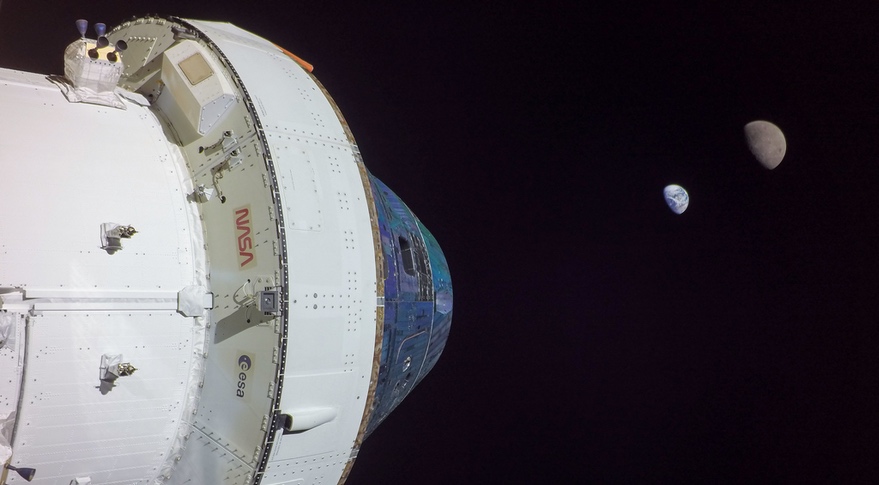WASHINGTON — NASA’s Orion spacecraft started its trip back to Earth Dec. 1 with the first of two maneuvers that will put the spacecraft on course for a splashdown in the Pacific Ocean in a week and a half.
The main engine in Orion’s service module fired at 4:53 p.m. Eastern for 1 minute at 45 seconds. That burn nudged the spacecraft out of the distant retrograde orbit around the moon it had been in since Nov. 25.
Orion is now descending back towards the moon, where it will perform a second maneuver, called the return powered flyby, on Dec. 5. That will set up Orion for a reentry and splashdown off the California coast Dec. 11.
At a Nov. 30 briefing, NASA managers said the spacecraft continued to perform well with only minor issues. “We are very proud that our system is functioning perfectly. It’s better than we ever expected,” said Philippe Deloo, ESA program manager for the European Service Module. The spacecraft was producing more electrical power than expected but consuming less than expected because of better thermal stability.
The propulsion system, which includes the main engine that is a repurposed shuttle-era Orbital Maneuvering System engine as well as several auxiliary thrusters and reaction control system thrusters, also is working well, he said, despite problems in its development. “The regulation of the propulsion system has been our trouble child throughout development, and it has just worked beautifully,” he said. “No problem whatsoever with this propulsion system.”
That lack of problems has freed up controllers to perform additional tests of the spacecraft. “With how well the mission is going, we have found ourselves, rather than having to work anomalies, able to push the boundaries,” said Zebulon Scoville, deputy chief flight director. That, he said, helps further reduce the risks for astronauts on Artemis 2, the first crewed mission.
Mission managers earlier added seven flight objectives during the spacecraft’s stay in distant retrograde orbit to test out the thermal characteristics of the spacecraft and its propulsion system. That included a thruster firing to maintain that orbit Nov. 30 that used auxiliary thrusters for longer than previous burns to see how they performed.
Mike Sarafin, Artemis 1 mission manager, said they have added four more objectives for the return leg of the mission. Two involve tests of a valve in a helium pressurization system to characterize its leak rate. A third will test attitude control maneuvers at a faster rate, and the fourth will test a different attitude control mode that could save propellant.
“We all came into the mission expecting to have challenges,” Scoville said, with controllers going through extensive training for such problems. “Instead, it’s kind of purring along and staying very smooth. The kinds of discussions we’re having are how to rev the engine a little bit harder and how to push it a little bit harder and faster.”
